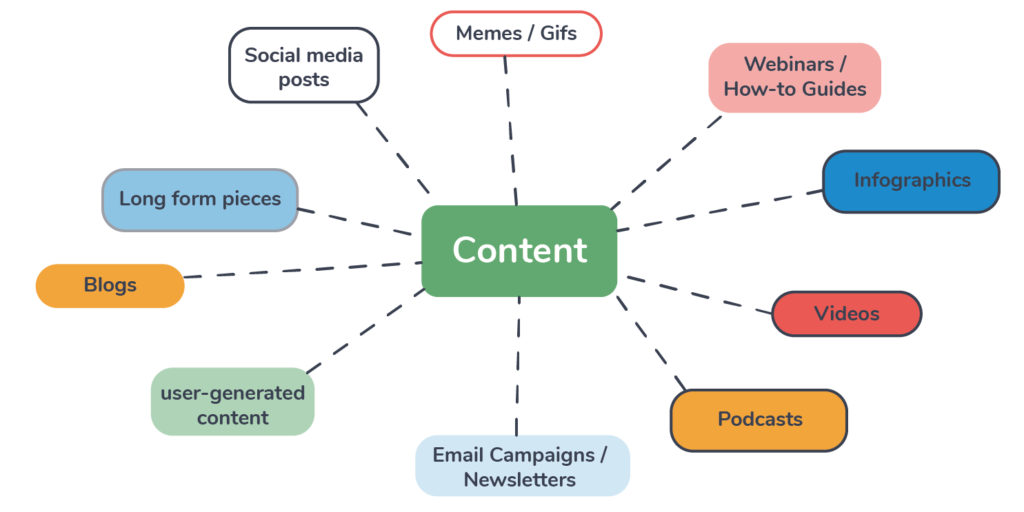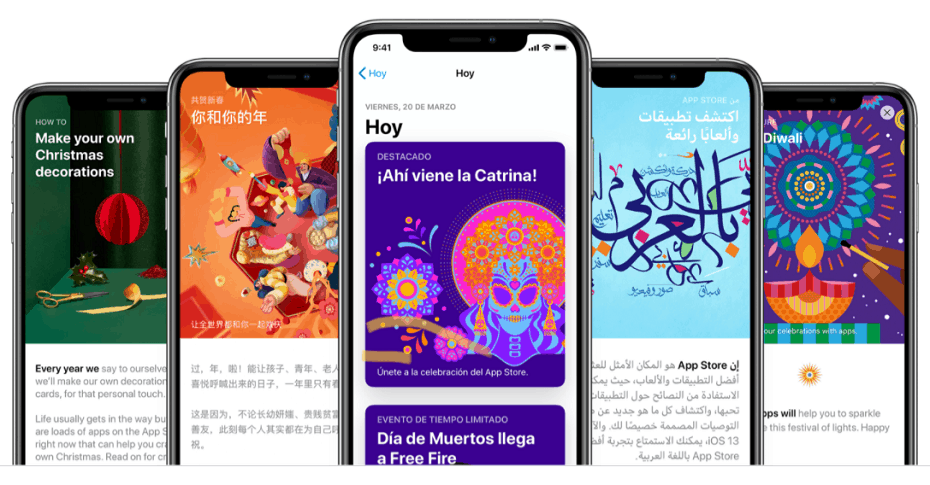Aloha! Plan on dubbing your content to another language for your non-English audience? You cannot discount the significance of dubbing quality. Consider this: While Siri and Alexa work remarkably well for noting down items in a grocery list, they may not be the ideal voice for an advertisement on buying a new mattress. You don’t want a dry and unemotional speaker for that. You’re looking for a peppy, energizing, and flirty voice convincing your buyers to open their wallets even more as the new year rolls by. So- quality matters.
But the real question here is: When it comes to dubbing, to what extent does quality matter? Before we address this, let’s consider consumer psychology around language-specific content online.
To what extent do people prefer content in their language?
There have been a fair amount of studies on whether people prefer to consume online content in their language or a different language. The results seem to be somewhat mixed. Some findings suggest that people tend to prefer content in their language, but a few have found that language is not a significant factor in determining content preference. Let’s delve in.

The Harvard Business Review did a great job of covering what consumers want in a review titled “Speak to Global Customers in Their Language” The article essentially discusses the importance of using language that is appropriate and familiar to your audience when communicating with them. It cites several studies that have found that people tend to prefer content in their language. It also addresses how using a familiar language can improve communication and increase the chances of success in various situations.
One study cited in the post found that people generally rated websites in their language more favorably than those in a foreign language. Another study found that people preferred news articles in their language when the content was about local issues but preferred articles in a foreign language when the content was about global issues. The blog post also discusses the importance of using language that is appropriate to your audience in business situations.
To be more specific, even when you’re speaking their language, if you use jargon or technical language that is appropriate to your audience’s context, this can hinder communication and make it more difficult for them to understand and engage with your message. On the other hand, using language that is familiar and easy for your audience to understand can help to establish trust and build a strong connection with them.
As a whole, the message emphasized by the review was the importance of using language that is familiar to your audience to effectively communicate and connect with them. So, it seems that people’s preference for online content in their language depends on a variety of factors, including the complexity and technicality of the content, the context in which it is being consumed, and the relevance and quality of the content. Hence, when dubbing your content, the significance of quality can be considered by accounting for multiple factors.
How important is dubbing quality
To address how important dubbing quality is, ask yourself the following questions:
What is the type of content you are creating?
Creators and businesses need to determine the type of content they are creating if they plan on dubbing it into new languages for their global consumers. Different types of content may require different approaches to dubbing to effectively convey the intended message and engage the audience. The type of content you’re working with can have a significant impact on the effectiveness of the dubbed version.

Just like a comedy TV show might require a different approach to dubbing than an action movie, the same approach can be taken toward branding. For example, if a creator or business is creating a dubbed version of an instructional video on how to operate their product, it is important to understand the genre and tone of the content to choose appropriate voice actors and use the right kind of dubbing techniques. Understanding the type of content you are working with can help you make informed decisions about how to dub it in a way that maintains the integrity of the original work and resonates with the audience.
Overall, determining what content you are creating is crucial when dubbing it for an audience, as it helps you to choose the right approach and techniques to effectively convey the intended message and engage the audience. This is especially important for creators and businesses, as they want to ensure that their content is well-received by the audience such that it meets their needs and matches or exceeds their expectations. By understanding the type of content they are creating and tailoring the dubbed version accordingly, both creators and businesses have a better shot at successfully connecting with a wider audience.
Who is your audience?
Just like the type of content, it is also essential for creators to know their audience if they plan on dubbing their content into new languages. This knowledge can help them to create a more effective and engaging dubbed version of their content. By understanding the language preferences and cultural differences of their multilingual audience, creators, and businesses can tailor the dubbed version to better meet the preferences of their audience.

For example, for a multilingual audience that speaks a specific language, one needs to consider the language and terminology that is most familiar and appropriate for that audience. This includes jokes, cultural quirks, or local lingo that can help personalize one’s content. Using language and terminology that is unfamiliar or inappropriate for the audience can hinder communication and make it more difficult for them to understand and engage with the content.
In addition to language and terminology, it is also important for creators and businesses to consider cultural differences when dubbing their content for a multilingual audience. For example, certain words or phrases that may be acceptable in one culture may be considered offensive or inappropriate in another culture. By understanding the cultural differences of their multilingual audience, creators, and businesses can avoid misunderstandings and ensure that their content is well-received.
What does your audience want from you right now?
Addressing the question of audience preferences helps you see what your consumers want and how your content can fulfill it. One example of this is the fast food chain McDonald’s. McDonald’s — a global brand with hundreds of thousands of outlets worldwide— had to adapt to the diverse needs and preferences of its customers in different parts of the world.

To understand what their foreign audience wanted and create content that resonated with them, McDonald’s conducted market research and gathered customer feedback in various countries. Based on this research, the company developed a range of products and marketing campaigns that were tailored to the tastes and preferences of its foreign audience.
For example, in India, McDonald’s introduced a range of vegetarian menu items, including the McVeggie burger and McAloo Tikki burger, to cater to the large vegetarian population in the country. The company also created marketing campaigns that highlighted vegetarian options and featured local celebrities to appeal to the Indian audience. Now, with the Indian population’s needs expanding to adopt more non-vegetarian food, Mcdonald’s has listened and followed suit. It evolved its previously vegetarian menu to introduce the fillet-O-fish and Chicken Maharaja Mac burgers, to cater to the non-vegetarian needs of the country as well.
In addition to adapting their products and marketing campaigns to local tastes and preferences, McDonald’s also created multilingual content for their foreign audience. The company developed websites, social media accounts, and other materials in different languages to ensure that its content was easily accessible and understood by customers in various countries.
How will your content’s needs change in the future?
Being a great predictor of your consumer’s changing needs is also key in determining how important it is to focus on quality dubbing. One example of a global brand that understood how their content’s needs would change in the future for their multilingual consumers is the technology company Apple. Apple — albeit a global brand with a diverse customer base in various countries around the world — didn’t start that way. It took localization and accurate prediction on part of the company to adapt to the changing needs and preferences of its customers in different regions.

To understand how their content’s needs would change in the future for their multilingual consumers, Apple conducted market research and gathered customer feedback in various countries. Based on this research, the company developed a long-term strategy to meet the evolving needs of its customers in different regions. For example, Apple recognized that the demand for multilingual content was increasing in emerging markets, particularly in Asia.
To meet this demand, the company developed a range of multilingual content, including product descriptions, user manuals, and marketing materials, in various languages. As Apple marketed across Tier 1 and 2 cities in Asia, the quality of dubbing for their multilingual adverts needed to be worthwhile. In addition to high-quality dubbing, the company also invested in localization efforts to ensure that its content was appropriate and relevant for different cultural contexts.
Finally, in addition to creating multilingual content, Apple also recognized the importance of providing customer support in multiple languages. The company developed customer support centers in various countries and trained customer service representatives to speak numerous languages to provide assistance to customers in their native languages.

What’s the payoff for investing in high-quality dubbing?
To put it simply, the payoff for a high-quality dub is localization. You not only get the perks of communicating with an audience in their language, but you can infuse intonations, cultural references, and other key touches to personalize your content. It is also important to address how high-quality dubbing can help enhance the credibility of a business or organization. It demonstrates one’s commitment to professionalism and attention to detail. This can be especially important for businesses operating in highly competitive markets.
Additionally, by providing dubbed content, businesses can ensure that their customers have a more enjoyable and immersive viewing experience. This can lead to increased customer satisfaction and loyalty. And finally, the benefit of accessibility cannot be overstated. Dubbing allows content to be made available to a broader audience by translating the audio into different languages. This can be especially beneficial for businesses looking to expand their reach and appeal to international markets. All in a high-quality dub make their content more accessible from greater localization, improves customer satisfaction, enhances a business’ credibility, and increases one’s marketability.
How AI Dubbing can help
The challenges of high-quality dubbing are pretty evident: staggeringly high costs and time-consuming production. This translates to delayed output in your content, which does not help with ranking and engagement from an SEO perspective. If you want to reach multilingual audiences, publishing regularly and quality dubs can prevent you from getting lost in the ocean of content on search engines like Google and YouTube. Fortunately, AI dubbing can sort you out in an instant.
Not only is AI dubbing just a fraction of the cost of manual dubbing, but it affords you both convenience and flexibility. Convenience because you can do it from the comfort of your home through online machine learning software like that offered by Dubverse. And flexibility because you can choose from multiple different speakers across tons of languages. You can get high-quality dubs right at your fingertips with our software. Easy, clean, accessible, and cost-effective. And the best part? You help the internet speak more languages. Sign up right here to get started today.


